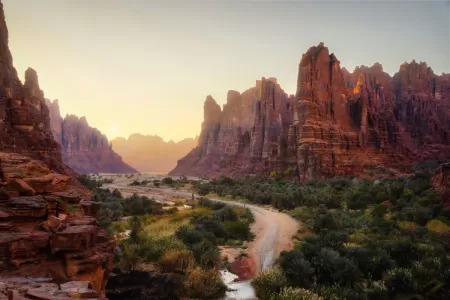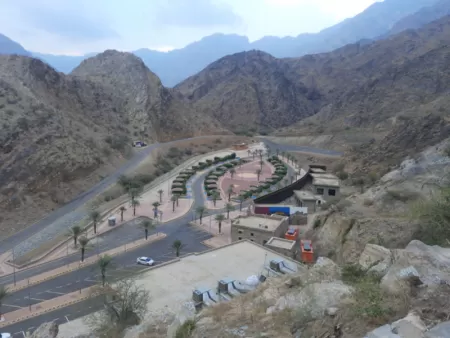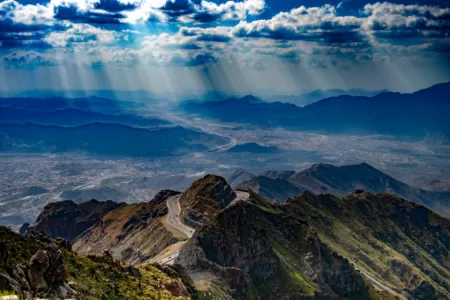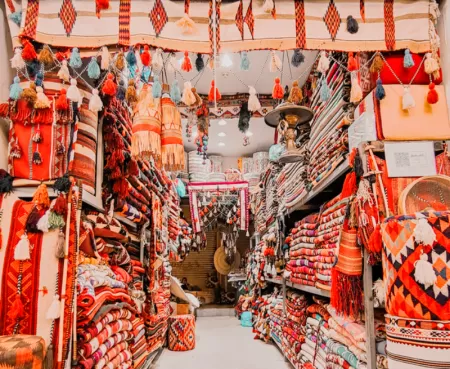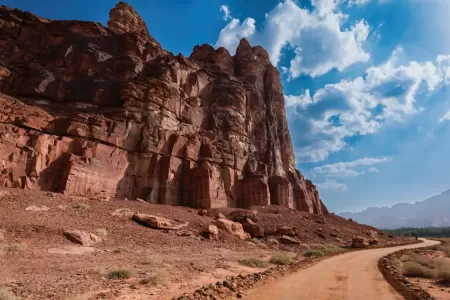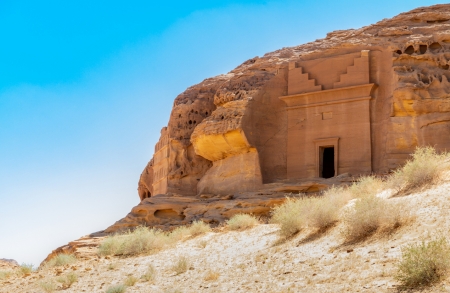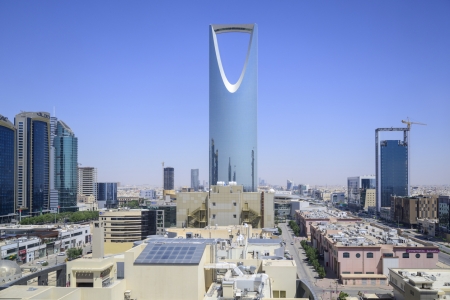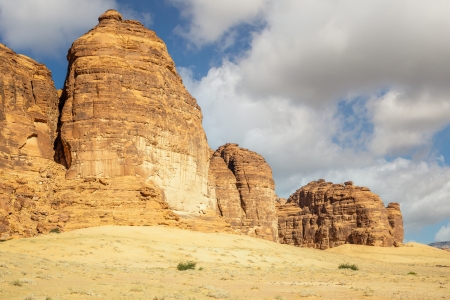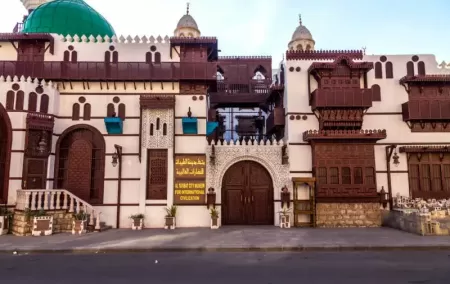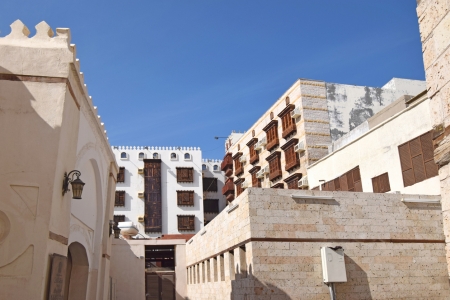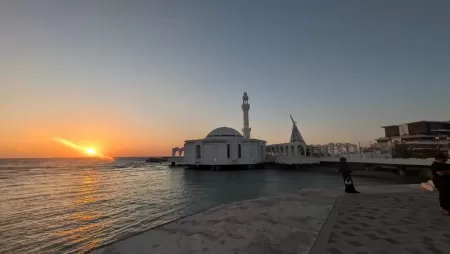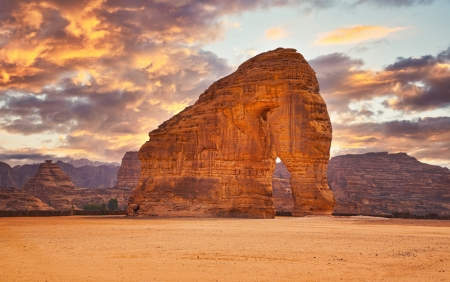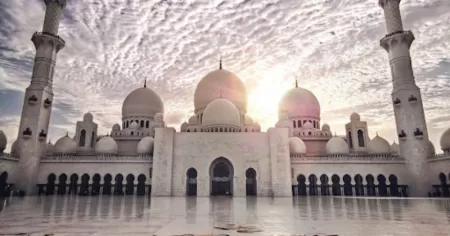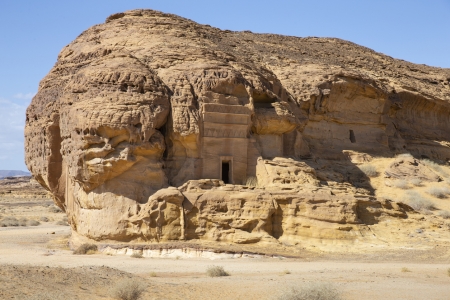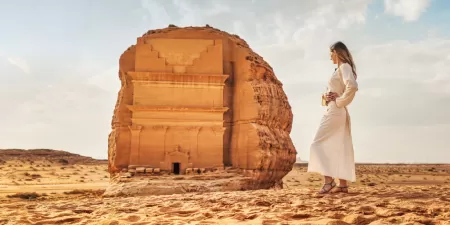Tabuk: From Ancient Castle to Futuristic NEOM City
Tabuk City, Saudi Arabia, rapidly blends ancient history with a futuristic vision. Explore its 5,500-year-old Tabuk Castle, historic railway, lush gardens, Red Sea access, and its role as a gateway to mega-projects like NEOM.

Few cities can claim such a dramatic metamorphosis as Tabuk, where a modest settlement of 12,000 souls in 1950 has blossomed into a bustling metropolis housing 594,350 residents as of 2022. The greater Tabuk Governorate now shelters 623,665 people, creating a fascinating urban tapestry perched 760 meters above sea level. This Saudi Arabian jewel generates an impressive $29.6 billion GDP, translating to a remarkable per capita income of $43,100 that speaks to the city's economic vitality.
Tabuk presents visitors with an extraordinary juxtaposition—ancient stones whispering tales of bygone eras alongside gleaming structures reaching toward tomorrow. The magnificent Tabuk Castle, standing sentinel for 5,500 years, shares the landscape with countless archaeological marvels: petroglyphs etched by forgotten hands, inscriptions that decode ancient languages, and sacred sites that have witnessed millennia of human passage. Religious pilgrims bound for Mecca have long recognized Tabuk as a vital waystation, infusing the city with spiritual significance and commercial prosperity that endures today.
The city occupies a strategic position on the cusp of unprecedented expansion, particularly as the visionary Neom City project reshapes the regional landscape into something resembling science fiction made manifest. Tabuk Province stretches across 146,072 square kilometers of diverse terrain, blessed with a temperate climate that nurtures both agricultural endeavors and international commerce flowing through Jordanian border crossings. Prince Sultan bin Abdulaziz Airport exemplifies this growth trajectory, recording a remarkable 25% surge in flight operations that connect Tabuk to distant corners of the globe.
History enthusiasts, nature lovers, and those captivated by urban evolution will find Tabuk an irresistible destination where past, present, and future converge in extraordinary ways.
Top Attractions in Tabuk City
Tabuk's cultural landscape unfolds like pages from a living history book, where ancient fortresses stand guard over verdant oases and time-worn stones harbor secrets spanning millennia. Each attraction tells a distinct chapter of this remarkable city's story, offering visitors glimpses into worlds both vanished and vibrantly alive.
Tabuk Castle and its museum
This formidable fortress commands attention not merely for its imposing architecture but for its profound connection to Prophet Muhammad during the pivotal Battle of Tabuk. The structure's bones date to 1586, though subsequent restorations in 1653 and 1843 have preserved its essential character as a crucial waystation along the Shami Hajj Road linking the Levant with Madinah.
The castle's architectural design reveals thoughtful planning across two distinct levels. Ground floor chambers embrace an open courtyard where pilgrims once gathered, complemented by residential quarters, a mosque, and a well that sustained countless travelers. Above, the upper floor showcases an open-air summer mosque alongside observation towers that once scanned horizons for approaching caravans. Behind these walls, two royal pools—one square, one rectangular—reflect architectural sophistication that transcends mere functionality. Following meticulous renovations in 2012 by the General Authority for Tourism and National Heritage, the castle now serves as an archaeological museum, its halls displaying Ottoman-era artifacts that illuminate centuries of cultural exchange.
The old Hejaz Railway station
Tabuk Station emerges as a monument to engineering ambition and religious devotion, ranking as the third-largest station by area after Madinah and AlUla. This sprawling complex encompasses approximately 13 buildings, each designed with pilgrim comfort in mind—hospitals for the weary, rest houses for the traveling, and quarantine stations ensuring community health.
September 1, 1906, marked a watershed moment when the railway's arrival transformed Tabuk forever, celebrated by merchants, tribal leaders, and dignitaries who recognized its profound significance. Today, this transportation relic functions as a museum where vintage tools and equipment whisper stories of steam-powered journeys and pilgrim dreams fulfilled.
The Bird Garden and local parks
Nature enthusiasts discover unexpected delights within the Birds Garden, where carefully curated ecosystems create a sanctuary for both wildlife and human visitors. This verdant refuge shelters diverse animal species beneath canopies of palm, olive, and acacia trees that provide natural architecture. Crystalline ponds mirror the sky while hosting graceful flotillas of ducks, geese, and swans, their serenity punctuated by the occasional cry of hawks, eagles, and brilliantly colored parrots.
Tabuk's commitment to green spaces extends beyond this single garden to include Prince Fahed Bin Sultan Park, King Abdul Aziz Park, Tabuk Airport Park, and the specialized Al Amwaj Women's Recreational Park—a thoughtfully designed space where women and children can enjoy complete privacy and freedom.
Red Sea coastal spots near Tabuk
Tabuk's position as a gateway to Saudi Arabia's Red Sea coastline opens doors to pristine seaside communities where turquoise waters lap against unblemished shores. These coastal gems beckon water enthusiasts and adventure seekers with opportunities ranging from peaceful beach contemplation to exhilarating aquatic pursuits, each experience framed by the Red Sea's legendary clarity and warmth.
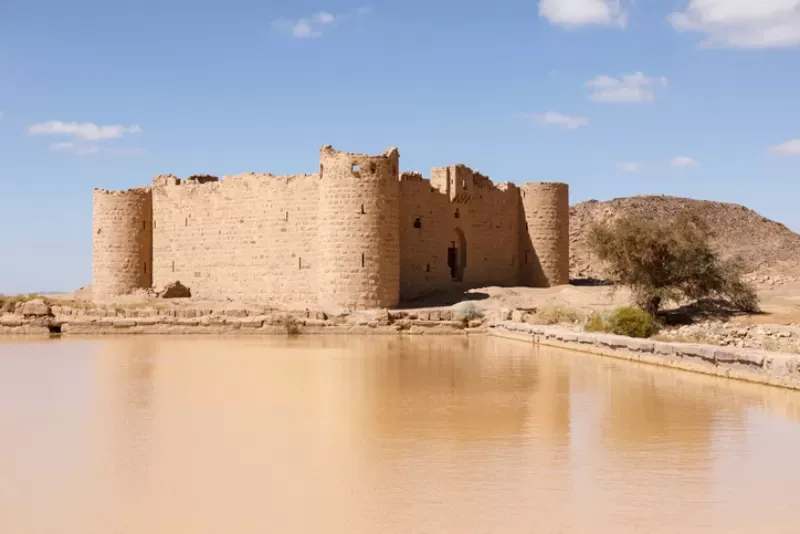
Experiences That Await in Tabuk
The city's magnificent landmarks represent merely the beginning of what Tabuk reveals to curious explorers. Rich heritage, natural marvels, and vibrant cultural traditions create countless opportunities for meaningful discovery throughout this captivating region.
Explore ancient rock art and inscriptions
South of Tabuk, the Harrat region safeguards extraordinary rock art collections that illuminate prehistoric existence and cultural exchange patterns. These masterful engravings capture hunting expeditions, wildlife portraits, and symbolic motifs that carried profound religious meaning. Wadi Bajdha, positioned northwest of the city, presents remarkable compositions featuring bulls and human figures that designate an open-air sanctuary. Archaeological investigations have revealed inscriptions spanning multiple ancient scripts—Thamudic, Nabataean, and Lihyanite—each telling distinct stories of civilizations that once flourished here. Particularly noteworthy are the "dual-line" inscriptions discovered in Alqan village, dating to the fifth century AD, which demonstrate the remarkable continuity of writing traditions across centuries.
Visit the oasis and natural springs
Tabuk province commands an impressive 18% of Saudi Arabia's entire coastline, creating access to stunning natural springs and coastal beauty. Wadi Al Disah stands as perhaps the most breathtaking destination, where golden dunes meet towering rock formations while freshwater streams wind between clusters of date palms. This remarkable valley defies the typical Saudi Arabian landscape, maintaining lush greenery throughout the year thanks to underground springs that feed crystal-clear natural pools and sustain a thriving ecosystem.
Enjoy local cuisine and markets
Tabuk's distinctive culinary traditions shine brightest during winter months, when warming dishes provide both comfort and nourishment. Mjallah (known locally as Khamiaa) showcases the region's wheat-based cooking heritage—wheat flour dough skillfully prepared on metal griddles with generous amounts of butter or olive oil. Regional specialties extend to Marqouq, which combines tender meat and fresh vegetables with handmade dough, Malihiya featuring meat paired with rice and creamy yogurt, and the coastal favorite Al-Sayadiah—perfectly sautéed rice browned with onions and served alongside freshly caught local fish. Market enthusiasts can navigate Tabuk Central Market for daily essentials, browse Tabuk Souk's aromatic spice stalls and textile displays, or hunt for treasures at the Tabuk Antique Market, renowned for vintage collectibles and authentic Bedouin jewelry.
Attend cultural festivals and events
Each summer, Tabuk Park Mall becomes the epicenter of regional celebration during the nine-week Tabuk Summer Festival, stretching from May 29 through July 31, 2025. This cultural extravaganza features carefully curated weekly themes, captivating live performances, and culinary showcases that highlight both traditional and contemporary Saudi cuisine. February brings equally spectacular Founding Day celebrations, where Saudi Arabia's cultural heritage takes center stage through traditional craft exhibitions, mesmerizing folk art performances, and hands-on children's activities that connect younger generations with their ancestral roots.
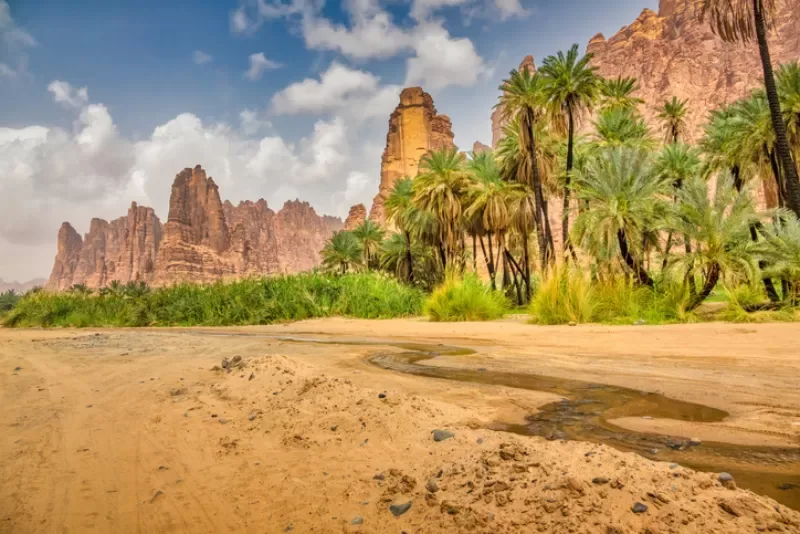
Modern Developments and Future Projects
Tabuk has emerged as the epicenter of Saudi Arabia's most audacious transformation, where colossal development initiatives worth hundreds of billions of dollars are reshaping the very fabric of regional possibility.
The Neom City initiative
Stretching across 26,500 square kilometers—an expanse rivaling Belgium itself—NEOM stands as Saudi Arabia's most ambitious giga-project and a fundamental pillar of Vision 2030. This extraordinary undertaking promises to birth "tomorrow's world" through an unprecedented marriage of natural splendor and technological innovation. The project's beating heart will house the planet's first hyper-connected cognitive city, where 5G networks, Internet of Things integration, data analytics, virtual reality, augmented reality, intelligent homes, and autonomous vehicles converge into a living laboratory of human advancement.
October 2024 witnessed the unveiling of NEOM's inaugural masterpiece: Sindalah Island. This opulent sanctuary boasts an 86-berth marina capable of welcoming up to 2,400 daily visitors. The entire venture maintains an extraordinary commitment to environmental stewardship, preserving 95% of its pristine natural surroundings while simultaneously advancing Saudi Arabia's economic diversification ambitions.
Amaala luxury tourism project
The year 2027 marks the anticipated completion of AMAALA, another jewel in Tabuk's crown of transformation. This ultra-luxury tourism sanctuary will present 3,000 hotel accommodations dedicated to wellness, athletics, artistic expression, cultural immersion, and lifestyle refinement. The inaugural phase, scheduled for 2025, encompasses eight distinctive resorts housing approximately 1,300 guest rooms.
AMAALA's foundation rests upon unwavering environmental consciousness. The entire destination will operate exclusively on renewable energy sources, preventing nearly half a million tons of annual CO2 emissions. Supporting this green vision, the infrastructure incorporates a 250 MW solar photovoltaic installation, 700 MWh battery storage capabilities, and sophisticated water management technologies.
Urban expansion and infrastructure upgrades
Tabuk's connectivity has experienced dramatic enhancement through expansive infrastructure evolution. The Roads General Authority has engineered over 8,000 kilometers of new transportation networks alongside more than 200 bridges, forging essential connections between Tabuk and the mega-developments of NEOM and AMAALA.
This infrastructure boom has catalyzed a 25% surge in Tabuk International Airport operations, drawing increased visitor numbers that energize tourism and economic vitality. Combined with NEOM Bay and Al Wash airports, the region now maintains direct links to strategic destinations including Dubai, Cairo, Riyadh, and Madinah.
Investment potential flourishes throughout the region, with the Saudi Ministry of Investment recognizing approximately $13.3 billion in prospective ventures spanning multiple economic sectors. Tabuk actively harnesses its abundant natural resources for renewable energy initiatives, directly supporting the national objective of generating 50% of electricity through renewable sources by 2030.
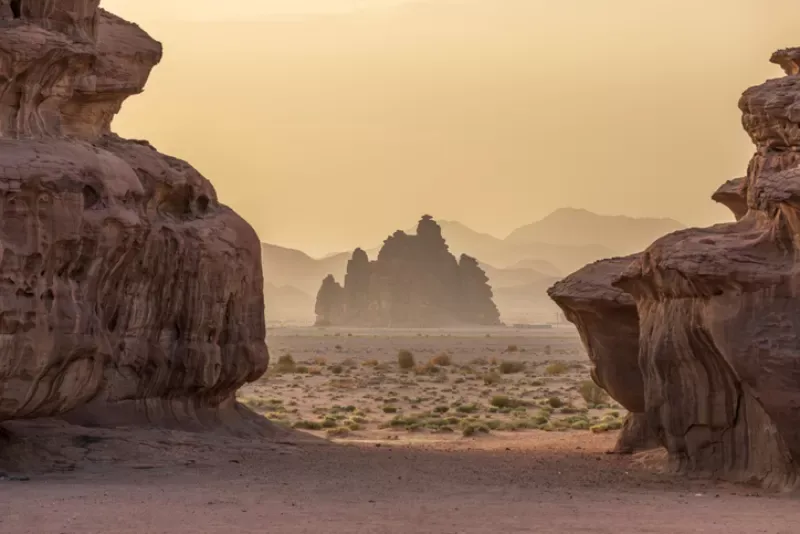
Customize Your Dream Vacation!
Get in touch with our local experts for an unforgettable journey.
Plan Your TripLiving in Tabuk: Lifestyle and Community
Tabuk's residential character emerges as a captivating blend where time-honored Saudi traditions seamlessly interweave with contemporary amenities, creating a distinctive living tapestry for both long-time residents and international newcomers at this northwestern gateway.
Cost of living and housing
Economic realities in Tabuk present an attractive picture when measured against Saudi Arabia's larger metropolitan centers. Restaurant dining reveals particularly reasonable pricing: casual meals average 32 SAR, while couples seeking a refined three-course dining experience can expect to invest around 105 SAR. Grocery shopping follows similar moderate patterns, with essential items like cheese priced at approximately 10 SAR per kilogram and fresh milk available for just 1.61 SAR per liter.
Housing markets showcase remarkable diversity across both architectural styles and financial accessibility. City center apartments featuring single bedrooms command monthly rents of 1,316 SAR, while spacious three-bedroom units typically require 2,275 SAR. Families seeking expanded living space often gravitate toward independent villas, which span a range from 4,000 to 8,000 SAR monthly. Neighborhoods such as Al-Ulaya, Al-Murooj, and Al-Sulaymaniyah have emerged as particularly desirable residential enclaves, with expatriate communities frequently selecting gated developments that feature enhanced amenities, including swimming facilities and fitness centers.
Community services and healthcare
Medical infrastructure demonstrates impressive scope and sophistication through the Tabuk Health Cluster, which serves over 886,000 beneficiaries across an extensive network comprising 84 primary care centers and 12 hospitals offering 1,488 total beds. Distinguished medical institutions include King Fahad Specialist Hospital, King Khalid Hospital, and Saudi German Hospital, each contributing specialized expertise to the regional healthcare landscape.
Community support structures flourish through numerous charitable organizations addressing diverse social requirements. Notable institutions include the Family Development Association, King Abdulaziz Charitable Society, and specialized entities such as the Autism Society in Tabuk. The Tabuk Volunteer Work Association further strengthens community bonds by actively engaging residents in development initiatives.
Expat life and international communities
International residents consistently highlight the genuine warmth demonstrated by local inhabitants and the robust community connections that characterize daily life. Expatriate housing typically features contemporary conveniences, generous living spaces, and strategic placement within secure, culturally diverse neighborhoods. While numerous employers extend accommodation allowances, prudent expatriates budget between 1,000 and 5,000 SAR annually for comprehensive health insurance coverage.
Tabuk's expatriate community exhibits a distinctive characteristic: rather than frequently departing for neighboring countries seeking entertainment options, residents here tend to cultivate deeper engagement with indigenous culture and the region's natural splendors. Although Saudi Arabia's alcohol prohibition remains strictly enforced throughout Tabuk, the city's thriving café culture and restaurant scene provide excellent venues for social interaction, with coffee establishments offering dependable internet connectivity alongside delectable local specialties.
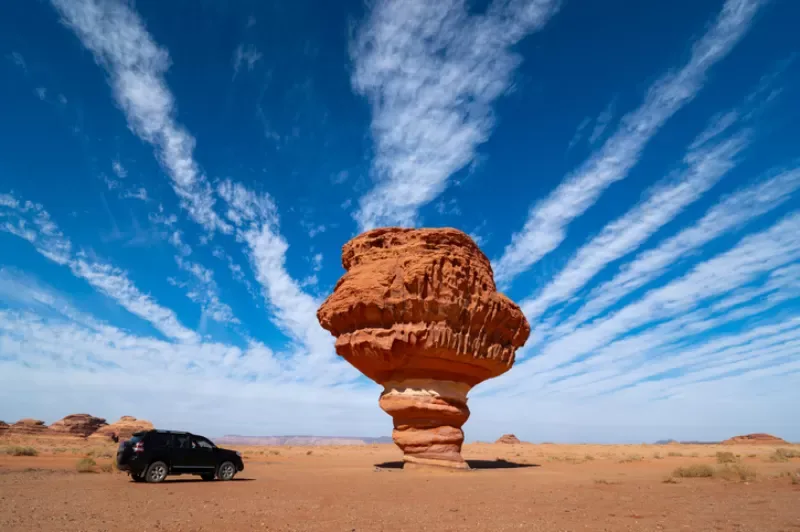
Conclusion
Tabuk emerges as an extraordinary testament to human ambition and natural endurance, where millennia of history converge with unprecedented visions of tomorrow. This remarkable Saudi Arabian destination offers visitors and residents alike the rare opportunity to witness temporal layers unfolding simultaneously—a phenomenon that few places on Earth can claim.
The architectural chronicles of Tabuk speak volumes: from castle walls that have weathered 5,500 years of desert winds to railway stations that once echoed with pilgrim prayers, each stone carries profound historical weight. These tangible connections to ancient civilizations coexist harmoniously with contemporary marvels like Wadi Al Disah's eternal springs and carefully curated gardens that celebrate both wildlife and human ingenuity. Local culinary traditions further enrich this cultural tapestry, offering flavors that have evolved through countless generations of desert dwellers.
Yet Tabuk's most captivating quality lies in its unprecedented role as a laboratory for future urban living. The emergence of NEOM City and Amaala represents more than regional development—these initiatives potentially herald new paradigms for sustainable metropolitan design worldwide. Such projects, supported by extensive infrastructure networks and connectivity enhancements, position Tabuk as a global case study in balanced progress.
The practical aspects of Tabuk life reflect this same thoughtful balance. Residents benefit from affordable living costs without sacrificing access to quality healthcare systems or community services. Both international newcomers and local families find themselves welcomed into a social fabric that values both tradition and innovation.
Tabuk offers something increasingly rare in our modern world: the chance to experience multiple centuries within a single day's journey. Morning explorations of ancient inscriptions can seamlessly transition into afternoon observations of cutting-edge construction techniques. This temporal fluidity creates an educational environment unlike any other, making Tabuk an essential destination for anyone seeking to understand how civilizations evolve while honoring their roots.
The city stands as living proof that progress need not erase the past—instead, it can illuminate history's lessons while building toward an even more remarkable future.
FAQs
Q1. What are the main attractions in Tabuk City?
Tabuk City offers a variety of attractions, including the historic Tabuk Castle and its museum, the old Hejaz Railway station, the Birds Garden, and nearby Red Sea coastal spots. The city also boasts ancient rock art sites, natural springs, and vibrant local markets.
Q2. How is Tabuk City developing for the future?
Tabuk is at the forefront of Saudi Arabia's ambitious development plans. The region is home to the NEOM City initiative, a futuristic urban project, and the Amaala luxury tourism development. The city is also undergoing significant urban expansion and infrastructure upgrades.
Q3. What is the cost of living like in Tabuk?
The cost of living in Tabuk is moderate compared to larger Saudi cities. A meal at an inexpensive restaurant costs around 32 SAR, while rent for a one-bedroom apartment in the city center averages 1,316 SAR monthly. Groceries and other daily expenses are also reasonably priced.
Q4. What opportunities are there for expats in Tabuk?
Expats in Tabuk can enjoy a strong sense of community, modern amenities, and multicultural living environments. Many employers provide accommodation allowances, and the city offers comprehensive healthcare services. Expats often engage deeply with local culture and natural surroundings.
Q5. What makes Tabuk unique among Saudi Arabian cities?
Tabuk uniquely blends ancient history with futuristic vision. It offers archeological treasures like 5,500-year-old Tabuk Castle alongside cutting-edge projects like NEOM. The city's strategic location, moderate climate, and rapid growth from 12,000 to nearly 600,000 residents also contribute to its distinctiveness.



